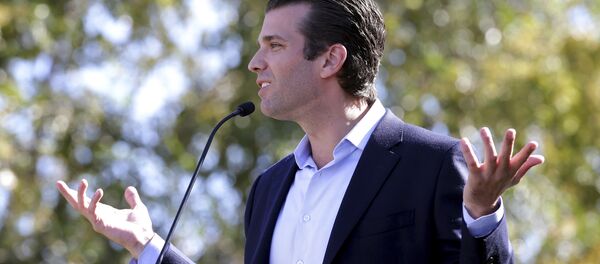"This does not meet our editorial standards, and we regret if it is seen as portraying the president in a negative light," Erica Hill, station news director, told the Seattle Times.
Local conservative talk radio station 770 KTTH shared on Wednesday a side-by-side comparison video of Trump's unaltered speech and the Q13 clip, in an effort to expose the differences between the recordings.
In the unaltered clip, Trump says, "Hopefully we can rise above partisan politics in order to support national security," before briefly licking his lips and continuing with his argument for a wall along the US-Mexico border.
The doctored video, on the other hand, shows Trump sticking out his tongue, letting it rest between his lips for an extended period of time before resuming his address to the nation. His mouth appears stretched, and also altered is Trump's skin-tone, which is exaggerated in such a manner to give POTUS a Flaming Hot Cheeto-inspired tan.
Todd Herman of KTTH's "The Todd Herman Show" explained in a Thursday statement that it was one of his listeners that brought the matter to his attention. Herman described the doctored recording as "bizarre and unbalanced."
But this isn't the first time that doctored footage has caught the attention of many. In November 2018, there was uproar after CNN reporter Jim Acosta saw his access to the White House temporarily revoked over altered footage that attempted to paint the reporter as more aggressive than he actually was during a press conference.
And there was also the time when filmmaker Jordan Peele tricked the internet by releasing a doctored public service announcement that featured former US President Barack Obama discussing the dangers of fake news.
Such doctored videos are examples of so-called "deepfakes": content that has been tweaked by sophisticated video and sound apps to either combine or superimpose new images onto existing videos to create false narratives. While the technology can be used in a light-hearted manner, it does have a dark side.




